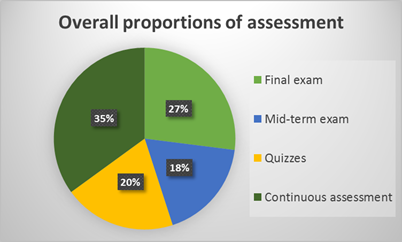How is English assessed at Thai schools?
Richard Watson Todd
“The consequences of testing and grading students are immense. They can determine the colleges students attend, the careers open to them, and the lifestyles they ultimately maintain.”
This quotation from Richard Arends shows how important assessment and grades are for students, yet very little is known about how teachers assess students at schools in Thailand. The most recent report on Thai education by UNESCO admits that there is little information available about school assessment and calls for research into the issue.
In addition to the consequences noted by Arends, the ways in which assessment is conducted can have impacts on how teachers teach, a phenomenon termed washback. For instance, using multiple-choice for assessment, as in Thailand’s national exams, can mean that English language teachers focus on vocabulary, grammar and the receptive skills in their teaching and largely ignore the productive skills and higher-order thinking. In turn, students find that rote learning is an effective way of gaining a passing grade and make few attempts to develop deeper understandings. Alternatively, using progressive assessments such as portfolios can have beneficial effects on teaching and learning with teachers incorporating higher-order skills into their teaching and students focusing on their own development. Washback, then, can be positive or negative.
To see how assessment influences English language teaching and learning at Thai schools, we need to know what assessment methods are used. To this end, a questionnaire (see https://goo.gl/forms/TS72vPULq96B3hFE2) was sent to English language teachers throughout Thailand asking about how they assessed their students, and 320 responses were received.
The key findings from the survey are that all teachers use final exams and continuous assessment with the vast majority also using mid-term exams and quizzes. The average proportions of overall scores for a course from these four methods are shown in the figure below. The most common item type on the exams is multiple-choice, but it only accounts for about 27% of all of the marks for a course on average, suggesting that the negative washback effects from multiple-choice may not be as serious as we might expect at Thai schools. On the other hand, all types of closed assessments (where there is a single correct answer) combined contribute nearly 60% of the marks on average which may have some negative washback effects. Turning to more progressive assessment methods, student presentations and project work are both widely used with each contributing about 10% of course marks when used.
The proportions of different assessment methods used for English language courses at Thai schools
Looking at whether teachers at different types of schools assess their students in different ways, two patterns emerge. First, teachers at secondary schools tend to place a heavier emphasis on final exams than teachers at primary schools, but are also less reliant on multiple-choice. Second, teachers at schools in Bangkok and surrounding areas assign a greater proportion of marks to final exams, whereas upcountry teachers use more continuous assessment.
Overall, the findings from the survey imply mixed effects on English language teaching in Thailand. On the one hand, the majority of marks come from closed assessments, such as exams and quizzes. On the other hand, all teachers use at least some open-ended continuous assessment. Any potential negative washback effects that might come from current assessment methods, then, are likely to be due to an imbalance in assessment methods, rather than a disregard for progressive assessments. Working to redress this imbalance could lead to a brighter future for English language teaching in Thailand.
โรงเรียนไทยวัดผลวิชาภาษาอังกฤษกันอย่างไร
โดย รศ.ดร.ริชาร์ด วัตสัน ทอดด์
“การสอบและให้เกรดนักเรียนมีผลพวงอย่างมหาศาล เพราะสามารถกำหนดมหาวิทยาลัยที่นักเรียนจะเข้าศึกษาต่อ เปิดเส้นทางอาชีพ และรวมไปถึงดำรงรูปแบบการใช้ชีวิตของพวกเขาได้”
คำกล่าวข้างต้นของ ริชาร์ด อาเร็นด์ แสดงให้เห็นว่าการวัดผลและการให้เกรดมีความสำคัญต่อนักเรียนมากเพียงใด อย่างไรก็ตาม การรับรู้ของสังคมเกี่ยวกับข้อมูลเรื่องวิธีการที่ครูไทยใช้ในการประเมินนักเรียนกลับอยู่ในระดับที่น้อยมาก รายงานขององค์การยูเนสโกเรื่องการศึกษาของไทยระบุไว้อย่างชัดเจนว่าข้อมูลเกี่ยวกับการวัดผลในโรงเรียนไทยมีน้อยมากจึงได้เรียกร้องให้มีการศึกษาเรื่องนี้เพิ่มเติม
นอกเหนือจากผลกระทบที่ อารเร็นด์ ได้ระบุไว้ข้างต้น การวัดผลยังสามารถส่งผลต่อวิธีการสอนของครู ดังที่เรียกกันว่า ‘วอชแบค’ (washback) หรือ “แนวปฏิบัติที่ส่งผลกระทบ” ตัวอย่างเช่น การวัดผลโดยใช้ข้อสอบแบบปรนัย ดังที่ใช้อยู่ในการทดสอบระดับชาติของไทย ทำให้ครูผู้สอนภาษาอังกฤษเน้นการสอนคำศัพท์ ไวยากรณ์และทักษะในเชิงรับสาร และละเลยทักษะในเชิงส่งสารรวมไปถึงทักษะการคิดระดับสูง ในทางกลับ กันการสอนลักษณะนี้ส่งผลให้นักเรียนเน้นการเรียนแบบท่องจำเพื่อให้สอบผ่าน แทนที่จะเน้นพัฒนาความเข้าใจอย่างลึกซึ้ง ทางเลือกหนึ่งที่จะช่วยหลีกเลี่ยงผลกระทบนี้คือ การวัดผลโดยใช้กระบวนการต่อเนื่อง เช่น แฟ้มสะสมงาน ซึ่งเป็นประโยชน์ต่อการเรียนการสอนมากกว่า เพราะช่วยให้ครูสามารถส่งเสริมทักษะระดับสูงและช่วยให้นักเรียนมุ่งพัฒนาตนเองได้มากขึ้น ดังนั้น ‘วอชแบค’ หรือ “แนวปฏิบัติที่ส่งผลกระทบ” จึงสามารถเป็นได้ทั้งในเชิงบวก และเชิงลบ
เพื่อให้เข้าใจถึงระดับของผลกระทบของการวัดผลที่มีต่อการเรียนการสอนภาษาอังกฤษในโรงเรียนไทย เราจำเป็นต้องศึกษาวิธีการวัดผลที่ครูใช้ ดังนั้น คณะวิจัยฯ จึงทำการสำรวจโดยส่งแบบสอบถามเกี่ยวกับวิธีวัดผลนักเรียนไปยังครูทั่วประเทศไทย และได้รับคำตอบจากครูจำนวน 320 คน (ดูเพิ่มเติมได้ที่ https://goo.gl/forms/TS72vPULq96B3hFE2)
ผลการสำรวจพบว่า ครูทุกคนใช้การสอบปลายภาค และการวัดผลแบบต่อเนื่อง (คะแนนเก็บ) นอกจากนี้ยังพบว่าครูส่วนใหญ่ใช้การสอบกลางภาคและการทดสอบย่อยในการวัดผลอีกด้วย โดยมีสัดส่วนโดยเฉลี่ยของคะแนนจากวิธีการวัดผลทั้ง 4 แบบในรายวิชาดังแสดงไว้ในแผนภูมิวงกลมด้านล่างนี้ ผลการสำรวจบ่งชี้ว่าข้อสอบส่วนมากเป็นข้อสอบแบบปรนัย อย่างไรก็ตามข้อสอบแบบปรนัยนี้คิดเป็นสัดส่วนเพียง 27% ของคะแนนทั้งหมดในรายวิชา ซึ่งหากมองในประเด็นนี้ อาจตีความได้ว่าผลกระทบในเชิงลบจาก ‘วอชแบค’ ที่เกิดขึ้นในโรงเรียนไทยอาจไม่รุนแรงเท่าที่เราคาดการณ์ไว้ ในทางกลับกัน หากพิจารณาจากภาพรวมของการวัดผลแบบปิดทั้งหมดที่นำมาใช้ (มีคำตอบที่ถูกต้องเพียงข้อเดียว) ซึ่งมีสัดส่วนของคะแนนเกือบ 60% ของคะแนนทั้งหมด ผลกระทบในเชิงลบจาก ‘วอชแบค’ ต่อโรงเรียนก็อาจมีอยู่บ้าง และเมื่อย้อนกลับมาดูที่วิธีการวัดผลแบบก้าวหน้าหรือการวัดผลแบบต่อเนื่อง พบว่าวิธีการที่ครูใช้อย่างแพร่หลายคือ การนำเสนองานของนักเรียน (Presentation) และ การทำโครงงาน (Project) ซึ่งมีสัดส่วนคะแนนประมาณ 10% ของรายวิชา
สัดส่วนแสดงวิธีการวัดผลแบบต่างๆในรายวิชาภาษาอังกฤษของโรงเรียนไทย

เมื่อพิจารณาตัวแปรด้านประเภทของโรงเรียนว่าเป็นปัจจัยที่ส่งผลต่อวิธีการวัดผลของครูหรือไม่ คณะวิจัยฯ พบประเด็นที่น่าสนใจ 2 รูปแบบ ดังนี้ ประการที่หนึ่ง ครูในโรงเรียนมัธยมศึกษามีแนวโน้มที่จะเน้นที่การสอบปลายภาคมากกว่าครูในโรงเรียนประถมศึกษา แต่ก็ใช้ข้อสอบแบบปรนัยน้อยกว่า ประการที่สอง ครูจากโรงเรียนในกรุงเทพฯและปริมณฑล ให้สัดส่วนคะแนนสำหรับการสอบปลายภาคสูงกว่าครูจากโรงเรียนในต่างจังหวัด ในขณะที่ครูจากต่างจังหวัดใช้การวัดผลแบบต่อเนื่องมากกว่า
ในภาพรวม ผลการสำรวจสะท้อนให้เห็นถึงผลกระทบแบบผสมผสานต่อการสอนวิชาภาษาอังกฤษในประเทศไทย ในแง่หนึ่งคะแนนส่วนมากมาจากการวัดผลแบบปิด เช่นการสอบและการทดสอบย่อย แต่ในทางกลับกันพบว่าอย่างน้อยที่สุดครูทุกคนก็มีการใช้การวัดผลแบบต่อเนื่องประเภทปลายเปิดอยู่บ้าง ดังนั้นผลกระทบเชิงลบที่อาจจะเกิดขึ้นจากวิธีการวัดผลที่ใช้กันอยู่ในปัจจุบัน น่าจะมาจากปัญหาเรื่องสมดุลของวิธีการวัดมากกว่าการที่ครูไทยละเลยหรือไม่ใช้วิธีการวัดผลแบบก้าวหน้า การลงมือแก้ไขปัญหาความไม่สมดุลนี้จะนำไปสู่อนาคตที่สดใสขึ้นสำหรับการสอนภาษาอังกฤษในประเทศไทย

